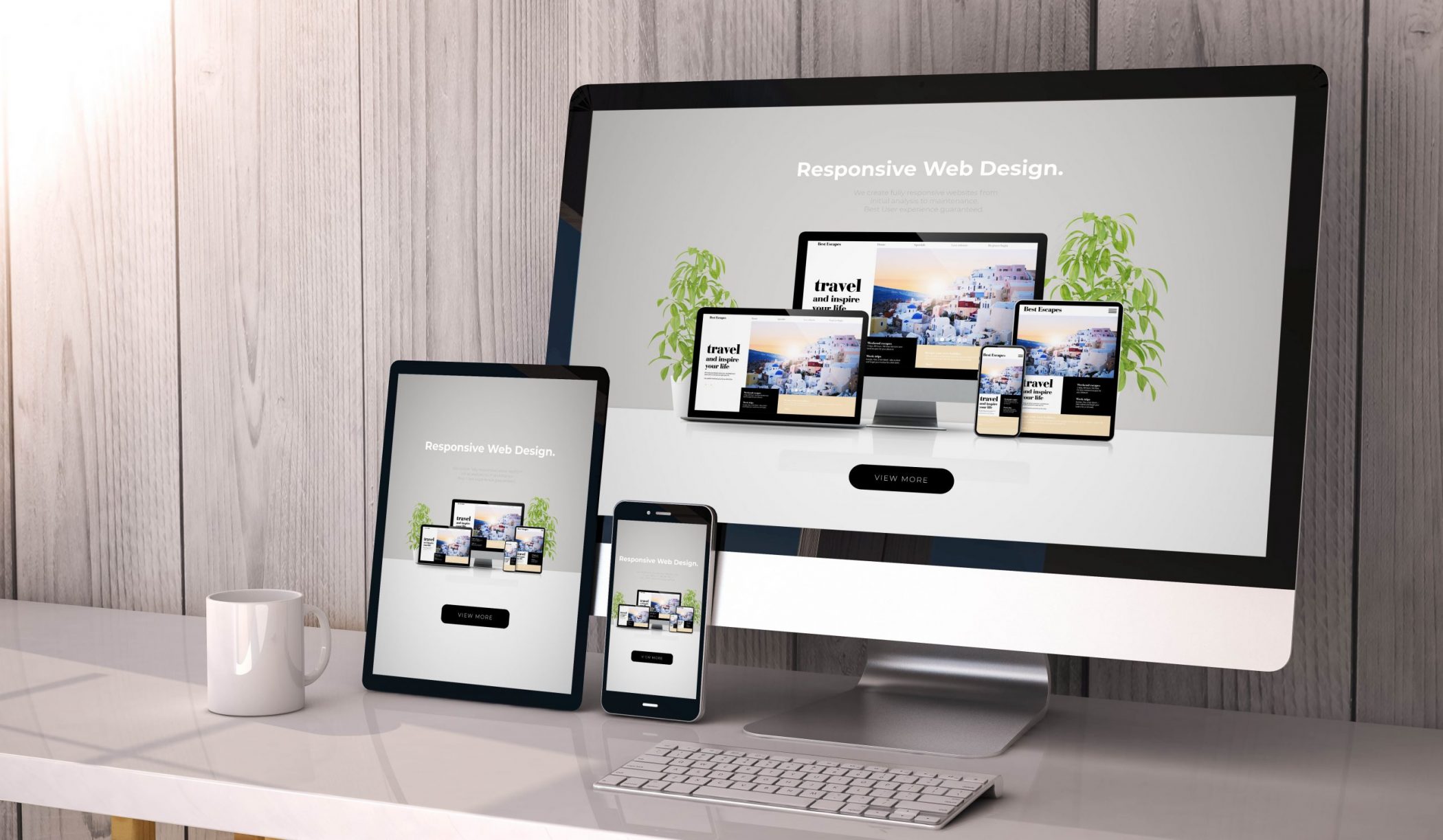The Significance of User Experience in Efficient Web Design Techniques
User experience (UX) offers as a cornerstone in effective web design strategies. It forms just how individuals connect with a site, influencing their contentment and chance of returning. A properly designed UX can improve interaction through user-friendly navigation and receptive formats. Ignoring these elements might lead to stress and raised bounce prices. Understanding the intricacies of UX is vital for developers intending to develop compelling digital experiences that resonate with diverse audiences. What factors absolutely drive successful user engagement?
Recognizing User Experience and Its Influence On Style
User experience (UX) is commonly viewed as a simple element of internet layout, it essentially forms exactly how individuals engage with a site. UX incorporates all aspects of the user's communication, consisting of functionality, ease of access, and general complete satisfaction. A positive UX promotes engagement, urging individuals to check out the website and return in the future. Alternatively, a negative experience can result in disappointment, causing high bounce rates and lost chances for conversion.
Layout aspects like web content, navigation, and design organization play important roles in shaping this experience. Effective UX style expects user requirements and choices, ensuring that information is easily accessible and visually enticing. In addition, recognizing user behavior via analytics can provide useful understandings, educating layout decisions that enhance functionality. Eventually, a thorough understanding of UX enables developers to develop sites that not just draw in users but also advertise purposeful communications that straighten with company goals and user expectations.
Secret Concepts of Efficient User Experience
Reliable user experience hinges on a number of vital principles that improve internet site functionality and involvement. User-friendly navigation style, responsive design essentials, and the significance of visual pecking order are vital aspects that add to a seamless communication between customers and web content. Recognizing these concepts allows developers to produce even more straightforward and available digital settings.
Instinctive Navigating Layout
Instinctive navigation style offers as a vital portal to their overall experience when individuals encounter an internet site. Efficient navigating allows customers to effortlessly find the details they seek, boosting their interaction with the site. Trick principles include clear labeling, rational company, and regular positioning of navigating elements. Tags should be uncomplicated, allowing users to anticipate the web content they will locate. A well-structured power structure assists individuals understand the connection between various areas, guiding them via the internet site seamlessly. In addition, receptive menus and conveniently obtainable web links contribute to a fluid experience across gadgets. By focusing on intuitive navigation, designers can considerably lower user aggravation and boost engagement, inevitably cultivating a favorable assumption of the internet site and its web content.
Receptive Layout Fundamentals
A well-structured navigating system naturally results in the requirement for a responsive design, which is essential in today's diverse digital landscape. A receptive layout guarantees that websites function perfectly across various tools, including tablets, smartphones, and desktop computers. This flexibility improves user experience by allowing content to be easily accessible and aesthetically meaningful, no matter screen dimension. Key concepts of receptive layout consist of fluid grids, adaptable pictures, and media inquiries, which assist in optimal viewing. Furthermore, prioritizing touch-friendly elements boosts interaction on smart phones. By carrying out a receptive format, designers can accommodate users' requirements, reduce bounce rates, and boost engagement. Ultimately, a well-executed responsive style fosters a favorable user experience, motivating site visitors to check out the internet site better.
Visual Pecking Order Value
Aesthetic pecking order plays an essential function in directing users via a website, ensuring that essential info records their interest. By tactically utilizing dimension, shade, comparison, and spacing, designers can produce a clear path for users to follow. Larger aspects frequently attract the eye, showing their relevance, while contrasting colors can highlight contact us to action. Furthermore, consistent placement and grouping of related content enhance comprehension, making navigating instinctive. Effective use of visual hierarchy not only improves usability yet additionally sustains the overall visual of the site, cultivating a favorable user experience. When users can easily recognize one of the most vital information, they are most likely to involve with the content, causing boosted contentment and communication with the website.
The Duty of Functionality in Web Design
Functionality plays a necessary function in web design, especially through navigating simplicity and adherence to ease of access standards. Reliable navigating enhances user satisfaction by permitting visitors to find details rapidly and intuitively. On the other hand, meeting access requirements ensures that all customers, despite their abilities, can properly engage with the website.
Navigating Simplicity
Simpleness in navigating stands as a keystone of effective web design, significantly influencing user experience. A structured navigating system enables customers to locate details quickly and intuitively, minimizing disappointment and boosting fulfillment. Clear labeling and logical structure are essential components, leading customers easily with the web site. Redundant web links or extremely complex food selections can disorient users, resulting in raised bounce rates. Additionally, mobile responsiveness should be thought about, guaranteeing navigating remains simple throughout tools. Lessening and focusing on essential pages clutter even more supports user interaction. Efficient navigating not just fosters a favorable experience however likewise motivates individuals to explore the site better, eventually causing higher conversion rates. Hereof, navigating simpleness functions as an important consider the total performance of web design approaches.
Ease of access Requirements
User interaction is greatly boosted when sites comply with access requirements, making certain that all individuals, despite their capabilities, can navigate and communicate successfully. Compliance with these requirements not only widens the target market but likewise improves total user contentment. Accessible style includes functions such as text choices for pictures, keyboard navigation, and enough shade comparison, which assist in usage by people with handicaps. In enhancement, applying these requirements can favorably affect search engine optimization (SEO) by improving website structure and clearness. As web design develops, focusing on ease of access comes to be important in fostering a comprehensive digital setting. By accepting these criteria, designers add to an extra fair net, eventually driving user commitment and involvement.
Significance of Responsive Layout for User Involvement
As consumers progressively accessibility sites with a variety of gadgets, the relevance of receptive layout ends up being extremely important for engaging individuals properly. Responsive design assurances that an internet site adapts perfectly to various display dimensions, offering an go now ideal viewing experience no matter of the tool made use of. This adaptability enhances user engagement by promoting easier navigation and interaction with material.
When customers run into an internet site that is responsive, they are most likely to remain longer, discover better, and return in the future. A properly designed receptive design lessens the frustration typically related to scrolling and zooming on smaller screens, thereby reducing bounce prices. Additionally, responsive style can positively impact internet search engine positions, as online search engine prioritize mobile-friendly internet sites. In today's electronic landscape, where mobile usage proceeds to increase, executing responsive layout is not just helpful, yet necessary for preserving user interaction and assuring a positive experience across all tools.
Enhancing Load Times for Better User Fulfillment

To improve load times, web designers should prioritize maximizing photos, leveraging internet browser caching, and decreasing HTTP requests. Additionally, using Content Delivery Networks (CDNs) can expedite content delivery by distributing it across numerous geographic places. Improving code, such as compressing CSS and JavaScript documents, even more contributes to quicker filling speeds.
Eventually, a commitment to improving lots times not just boosts user satisfaction but likewise reinforces brand name commitment and boosts the likelihood of repeat check outs. A swift, seamless experience is essential for maintaining individuals and fostering favorable interactions.
The Impact of Visual Pecking Order on User Communication
Aesthetic hierarchy acts as an essential component in guiding user interaction on a site. By organizing content in a manner that focuses on info aesthetically, developers can affect just how individuals browse and involve with a website. This pecking order is established via different design techniques, consisting of dimension, contrast, color, and spacing. For circumstances, bigger font styles or bold shades draw attention to crucial elements, such as phone call to activity or headlines, while subdued shades and smaller fonts can show secondary information.
Reliable visual hierarchy helps customers swiftly determine what is crucial, minimizing cognitive load and improving usability. It permits intuitive navigation, making it easier for customers to find what they require without disappointment. As users you can try this out engage with a website, a well-structured aesthetic pecking order cultivates a more rewarding experience, eventually bring about higher engagement and conversion rates. Designers need to focus on these concepts to develop an user-centered and efficient web atmosphere.
Measuring User Experience: Tools and Strategies

Often Asked Concerns
Just How Can I Improve My Website's User Experience on a Spending plan?
To improve a site's user experience on a budget plan, one can enhance page lots speed, simplify navigation, execute receptive layout, improve material clearness, and collect user responses for continual refinements, guaranteeing a satisfying visitor experience.
What Are Common User Experience Mistakes to Prevent in Web Design?
Typical user experience errors in web design include cluttered formats, poor navigation, sluggish packing times, lack of mobile responsiveness, disregarding access, irregular branding, and stopping working to focus on user comments - web design company. Each can substantially hinder overall site efficiency
Just how Frequently Should I Update My Site for Better User Experience?
Web sites ought to be upgraded consistently, preferably every few months, to preserve perfect user experience. Frequent updates assist address usability issues, refresh content, and adapt to changing user requirements, ensuring the website stays appealing and appropriate.

Can User Experience Effect SEO Rankings on My Site?
User experience can significantly affect SEO rankings, as internet top article search engine prioritize web sites that provide seamless navigation, quick loading times, and interesting web content. A favorable user experience can result in lower bounce rates and higher search visibility.
What Duty Does Access Play in User Experience Design?
Ease of access plays a crucial role in user experience layout by making sure that all people, despite abilities, can interact and browse with a site successfully. This inclusivity boosts general fulfillment and interaction among diverse individuals.
User experience (UX) is typically perceived as a mere aspect of internet design, it fundamentally forms just how individuals engage with a website. User involvement is considerably improved when websites adhere to accessibility criteria, guaranteeing that all customers, regardless of their capabilities, can navigate and interact properly. Gauging user experience (UX) is important for comprehending exactly how successfully an internet site satisfies the demands of its users. Additionally, usability testing, where real customers navigate the website while viewers note troubles, supplies direct feedback on user experience. Typical user experience blunders in internet design include messy designs, bad navigation, slow filling times, absence of mobile responsiveness, ignoring ease of access, irregular branding, and stopping working to prioritize user comments.